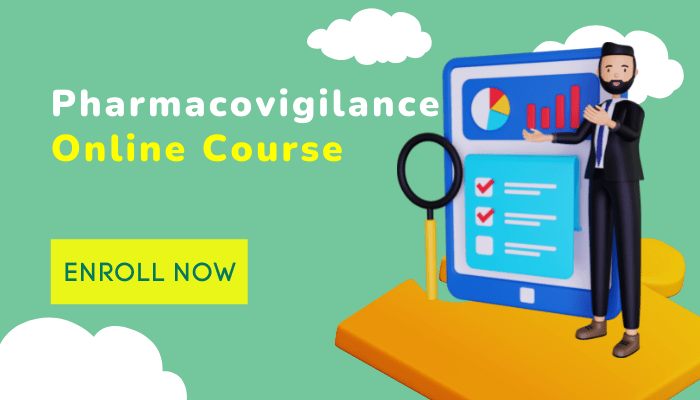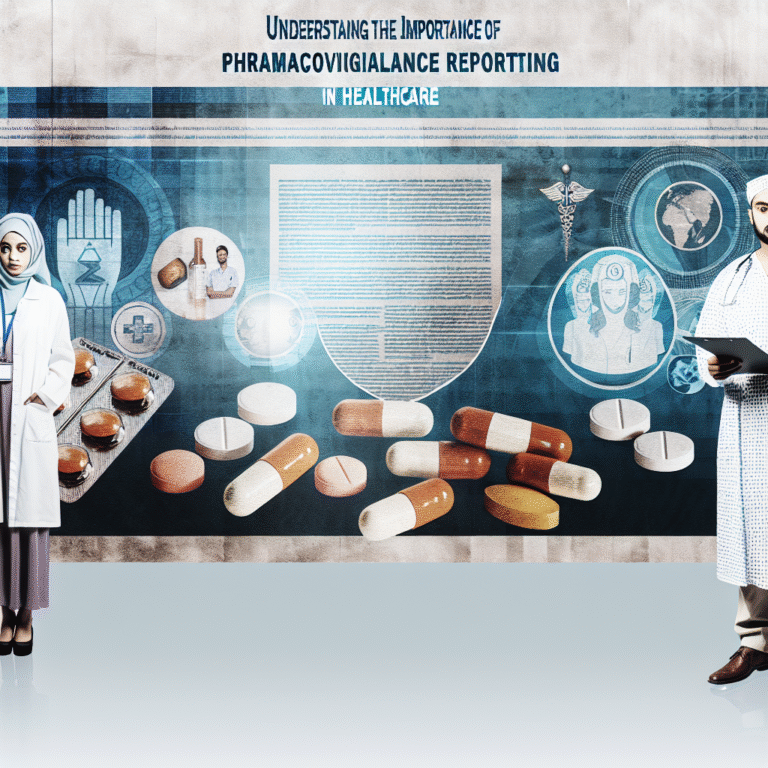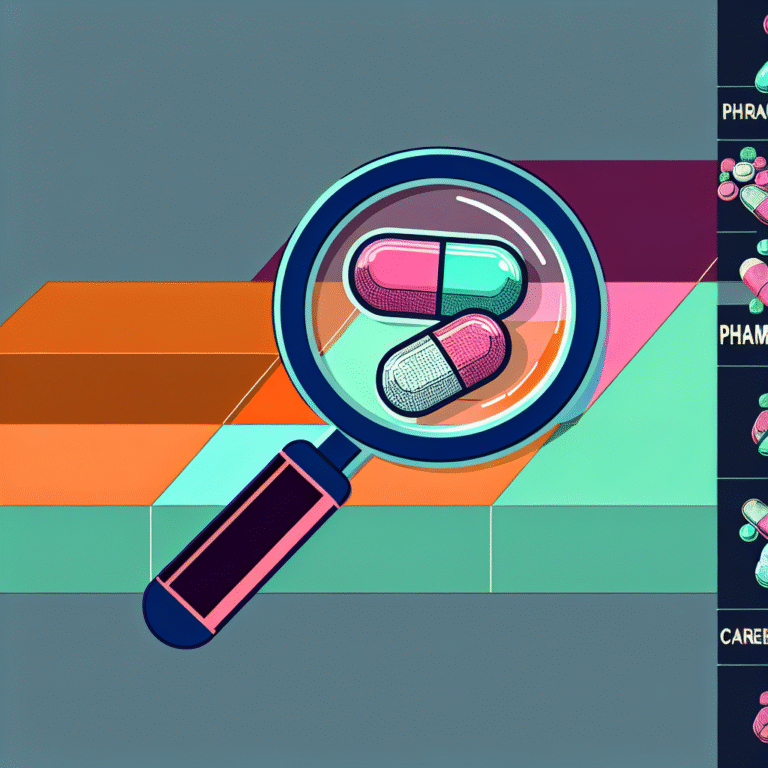Understanding Pharmacovigilance Reporting Types: Ensuring Drug Safety and Compliance
**Understanding Pharmacovigilance Reporting Types: Keeping Medications Safe**
**Introduction**
Welcome to the world of pharmacovigilance, where we make sure medicines are safe and follow the rules. Pharmacovigilance is super important because it helps keep track of medicine safety after they’re out in the world. It keeps people safe from bad reactions and makes sure that everything is done right. Medicines are getting more complex, so knowing about the different kinds of pharmacovigilance reports is really important. In this post, we’ll learn about different types of reports, what they do, and why they’re important for keeping medicines safe.
**What is Pharmacovigilance?**
Pharmacovigilance is all about watching out for problems with drugs. It’s like having a team that checks if medicines are safe and spots any issues with them. The main goal is to keep people safe and healthy by spotting dangers early.
Pharmacovigilance helps public health by:
1. Finding bad drug effects early and stopping harm.
2. Checking the benefits and risks of medical products.
3. Making sure medications are used safely to avoid extra health problems.
**Types of Pharmacovigilance Reports**
In pharmacovigilance, there are different report types to check drug safety. Each one is used for a specific purpose and uses different methods.
**Spontaneous Reporting**
Spontaneous Reporting is a big part of pharmacovigilance. It’s when health care workers, patients, and drug companies report any unexpected problems with drugs.
**Strengths of Spontaneous Reporting:**
– Gives real-world data and useful insights.
– Helps find rare bad reactions early.
– Helps create safety alerts.
**Limitations of Spontaneous Reporting:**
– Not everyone knows to report problems, so some don’t get reported.
– Hard to tell if the drug caused the reaction.
– Reports can be different in quality.
**Expedited Reporting**
Expedited Reporting is about quickly reporting severe and unexpected drug reactions to the authorities. It meets global standards to handle urgent safety concerns.
**Key Aspects of Expedited Reporting:**
– Quick reporting, usually within 7 to 15 days.
– Focuses on serious, life-threatening, or surprising reactions.
– Follows strict rules and timelines.
**Periodic Safety Update Reports (PSURs)**
PSURs provide regular reviews of a drug’s safety over time. They are helpful for ongoing safety checks even after the drug is approved.
**Core Components of PSURs:**
– Summary of all drug reactions.
– Comparing benefits and risks.
– Suggestions for updating labels or warnings.
**Periodic Benefit-Risk Evaluation Reports (PBRERs)**
PBRERs look at overall drug benefits and risks throughout its use, going beyond PSURs. They help ensure the drug is used correctly.
**Advantages of PBRERs Over PSURs:**
– Detailed look at benefits and risks.
– Focus on new safety information.
– Helps guide risk management plans.
**Case Series Reports**
Case series reports collect and study drug reactions from a specific group of patients. They’re useful for spotting patterns.
**Importance of Case Series Reports:**
– Spotting patterns and groups of reactions.
– Help to detect and assess safety signals.
– Better understanding of drug use in specific groups.
**Clinical Trial Reporting**
Pharmacovigilance is important during clinical trials to monitor safety before drugs are approved.
**Key Elements of Clinical Trial Reporting:**
– Recording drug reactions during trials.
– Including safety checks in trial planning.
– Meeting reporting rules.
**Regulatory Authority Reporting**
Regulatory authorities are important partners in pharmacovigilance. Reporting to them makes sure rules are followed.
**Components of Regulatory Authority Reporting:**
– Quick report of urgent safety concerns.
– Submit regular and special reports.
– Working together for safety plans.
**Literature Reporting**
Pharmacovigilance experts use science papers to find and study drug reactions, improving safety checks.
**Approaches to Literature Reporting:**
– Reviewing scientific articles and studies.
– Using databases and journals for data.
– Including literature results in safety checks.
**Medical Literature Monitoring**
Regularly checking medical literature helps find new drug reactions and safety concerns.
**Benefits of Medical Literature Monitoring:**
– Keeping safety knowledge up-to-date.
– Comparing with spontaneous reports.
– Overall check of safety trends.
**Social Media and Digital Reporting**
Social media is becoming a new data source for pharmacovigilance, bringing opportunities and challenges.
**Opportunities in Social Media Reporting:**
– Quick access to patient stories.
– Spotting drug reaction trends in different groups.
– Fast signal development.
**Challenges in Social Media Reporting:**
– Different data quality and truth.
– Hard to check information sources.
– Concerns about patient privacy.
**Why Comprehensive Reporting is Important**
All these different types of reports work together to create a strong safety system. Comprehensive reporting improves the detection and study of drug reactions and helps with making regulatory decisions.
**Contributions of Comprehensive Reporting:**
– Complete safety profiles of drugs.
– Smart risk management strategies.
– Help with changing regulatory systems.
**Challenges and the Future**
Even though pharmacovigilance is doing well, there are still challenges like under-reporting and data quality issues. Technology like AI and data analysis can help improve the process and make data more accurate.
**The Future of Pharmacovigilance:**
– Using advanced data tools.
– Including patient-focused reporting.
– More teamwork among key players.
In summary, having a comprehensive approach to pharmacovigilance reporting is key to ensuring medicine safety and following regulations. By learning and using the different reporting types, healthcare workers and pharmaceutical companies make the world safer for patients everywhere. Pharmacovigilance Foundations is dedicated to giving you the information you need to do well in this fast-changing area.





